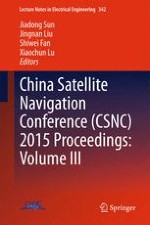2015 | OriginalPaper | Buchkapitel
39. Simulation Analysis and Research on Key Technology for a Full-Time-Running Stellar Refraction Autonomous Navigation
verfasst von : Qin Lin, Zhi Li, Huaifeng Li, Liang Song, Bo Meng
Erschienen in: China Satellite Navigation Conference (CSNC) 2015 Proceedings: Volume III
Verlag: Springer Berlin Heidelberg
Aktivieren Sie unsere intelligente Suche, um passende Fachinhalte oder Patente zu finden.
Wählen Sie Textabschnitte aus um mit Künstlicher Intelligenz passenden Patente zu finden. powered by
Markieren Sie Textabschnitte, um KI-gestützt weitere passende Inhalte zu finden. powered by
